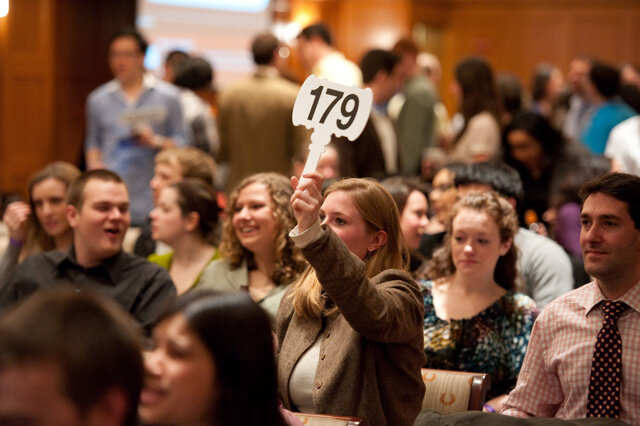What to Expect When You Use An Auction House
Let’s just say that you have decided to consign your personal property with a specific auction house. If the auction house agrees to sell your property, one of four things will happen when the hammer falls: the items will sell for a price you expect (within the auction estimate), for a price more than you expect (exceeding the auction estimate), for a price less than you expect (below the auction estimate) or they might not sell at all. Only two of these outcomes are good. How can you increase your chances of auction sale success?
Finding an Auction House
First, you must find an auction house that will accept the consignment. This is often easier said than done.Auctions can be picky, and for good reason. They pay their expenses by charging consignor’s fees and buyer’s premiums. It behooves them to accept property that their regular buyers will both compete for, and pay top dollar to buy. Even if an item is valuable, it also needs to be worth the space it takes up in their gallery or warehouse. For example, it doesn’t “pay” for them to move, clean, display, photograph, catalog, store, insure and advertise large art, furniture or decorative objects that will sell for low prices or might not sell at all. Smaller, high value items will be most attractive to an auction venue.
Second, choose an auction house that regularly offers and markets your specific kind of property. An auction house cultivates its buyers and keeps them returning by offering a type of product or medium. They can be powerful in one area and ineffective in another. While Bonham’s would probably accept your Old Masters painting, it may not be the place to sell your folk art.
Third, look for an auction that will make your property look good. For example, imagine that you are trying to sell a dining room suite. If the auction house already has several suites, what does that mean for your furniture? There may be a limited number of potential buyers for your property. How many dining room furniture buyers will be in the audience? Will yours be the chosen favorite or the least desired? An auction house may be reluctant to take on too much similar product. Fourth, negotiate a reasonable sales commission. The auctioneer will want to recover the expenses related to packing, moving, photographing, storing, insuring, and marketing your property. Depending on the desirability and value of the complete consignment, expect to pay 10-50%. There could even be a sliding scale. Low value items are likely to incur higher commission rates than high value items.
Finally, think ahead! Some auctions are conducted monthly or quarterly which means your property might not be presented when you want to sell it. Regional or local estate auctions can get full of property quickly during the peak real estate selling season. Specialty auctions might only happen once a year or once a season. Your items may have to enter a weeks, months or years long queue before getting sold.
Christie’s, Sotheby’s or Bust
Which auction house is the most appropriate for your collection? This is a very good question for consideration. Many collectors neglect to consider selling with an auction that is not one of the “big houses.” For them, it’s Christie’s, Sotheby’s or bust. These two have high profile business models, but there are markets that might be a better and more profitable fit for your collection. There are dozens, if not hundreds of marketing options. Finding the right fit for your property takes knowledgeable and creatiskill.
Who are the Buyers for your Property at Auction?
Auction shoppers are finicky, too. Some are collectors (retail type end-users) and some are dealers planning on making a profit. Many keep their eyes on current Internet sales and their favorite auctions. Some will examine the objects in-person before the sale takes place and a few will attend the auction in person. They are ALL seeking a bargain. All of them will take into consideration the total cost when bidding. When an object “hammers down” for $100, the buyer will pay an additional (approximately) 25% buyer’s premium and a 7% NJ sales tax for a total invoice of $132 (Estimated: NJ tax is 6.875 and buyer’s premiums differ by auction house). A typical “sell through” rate at auction is 70%. This means that 7 out of 10 items sell, and 3 items do not find a buyer. There may be post-auction sales that take place, but items will sell for far less than their auction estimate. Consignors with unsold items must immediately pick up their property after paying the auction for insurance and marketing fees. After a short period of time, the consignor will also incur storage fees, shipping fees, or both. Not selling your property can be expensive! For more information about what happens when your items don’t sell, see my previous blog on “burning.”
What Do You Put in Your Pocket?
40 days after the sale closes, the consignor will get a check for $70! Wow! That’s a big difference, isn’t it? For an item that the buyer pays $132 for, the seller nets about half! Some sellers fail to realize that the specific auction house they chose may have been an inappropriate choice. Or, selling at auction may have been a poor methodology from start. Consulting with a third-party, independent professional increases your odds of putting the most money possible into your ppocket.
To talk about selling your collection, contact the Magnussons at 973-425-1550.
Co-Authors: Lynn Magnusson, ASA, AAA and Becky Lipnick, Communications Coordinator

